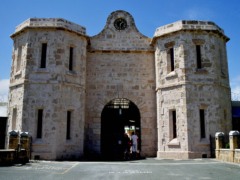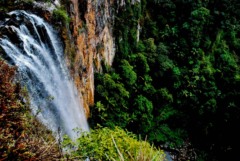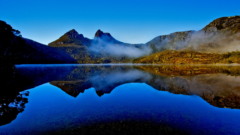The Willandra Lakes Region is well-known for the fossilized remains of a series of lakes and sand formations. About 18,500 years ago, the creek that used to feed the lakes in the Willandra Lakes Region stopped flowing. This caused the lakes to dry up. But they left behind valuable pieces of the Pleistocene era, which is when humans changed into what they are today. People lived in the area between 45,000 and 60,000 years ago, as shown by fossils and other artifacts from the Pleistocene period.
Willandra Lakes
It has been a UNESCO World Heritage Site since 1981 because it is a great place to see how Australians have changed over time. Fossils of giant marsupials that are still in good shape have been found. In the dunes of Lake Mungo, the bones of a woman who lived 40,000 years ago were found. People think this is the oldest place in the world where the dead have been burned.
People have lived in one of the oldest places outside of Africa for a very long time. People can walk around the land and see how the Aboriginal people used to live there. Aboriginal people from the Muthi Muthi, Ngiyampaa, and Barkinji tribes have always met in the Willandra Lakes area. The area has important natural and cultural features, such as the world’s oldest cremation site, which is a great example of how people used to live.
Mungo National Park takes care of a small part of the area. Over the last 2 million years, the Willandra Lakes have formed. The old shorelines are made up of three main layers of sediment that were laid down at different times in the lakes’ history. The oldest sediments are orange-red and older than 50,000 years. Above are clay, clean quartz sand, and soil that were left along the lakes’ edges when the lakes were full of fresh water between 50,000 and 19,000 years ago.
The top layer is mostly made up of clay particles that were blown around by the wind and piled up on the lunettes when the lakes’ water levels changed before they finally dried up. Aboriginal people lived on the Willandra Lakes shores between 35,000 and 40,000 years ago. It is one of the oldest places in Australia where people have been found. There is a lot of proof that Aboriginal people have lived here for the last 10,000 years.
Willandra Lakes Region
History: Most of the European exploration of the area was done by unknown herders who followed famous explorers. The person who did the most to get people interested in the area was Captain Charles Sturt. In 1829, he found the upper parts of the Darling River. He named it after Governor Ralph Darling. George Boyle White, a surveyor, explored the Darling in 1833 from the junction of the Peel River and the area around Fort Bourke.
Two years later, Major Thomas Mitchell, the Surveyor-General of New South Wales, tried to find out if the Darling did, in fact, flow into the Murray, as Sturt had thought. Mitchell did not make friends with the Aboriginal people, though. After going south as far as Laidley’s Ponds, where one of his group members shot and killed an Aboriginal, he decided it was best to turn back.
Mitchell went back to the area in 1836, but this time he went down the Murrumbidgee to explore the Darling River from where it meets the Murray River. But since he was sure Sturt was right, he only followed the Darling upstream for a few kilometers before moving on to something else.
Soon after, stockmen used the Murrumbidgee/Murray route to bring sheep and cattle by land to South Australia, which had become a colony in 1836. People who wanted to get their hands on new land followed government surveyors and explorers into the new areas. In 1845, George Hobler bought a run on the Lachlan and called it Paika. This was the first pastoral station in the lower Darling area.
Willandra Lakes World Heritage Area
Geography: Willandra Lakes is in the southwest corner of the state of New South Wales. The lake system, which is left over from how the Lachlan River used to drain, is about 150 km long and 40 km wide. It runs from Lake Mulurulu in the north to Lake Prungle in the south. It is about 600,000 hectares in size.
Along the eastern shores, white sand and clay dunes rise 40 meters above the plain, and deep gullies have been cut through the lakeshore deposits. Low, parallel ridges of fine red sand make up the land around the system. The most famous lake in the area, Lake Mungo, is in the middle of the Willandra Lakes system, about 100 km north-east of Mildura.
Willandra Lakes is an ancient river that formed during the Pleistocene Geological Period, when the weather was much colder and wetter than it is now. The Lachlan was a much bigger river thirty thousand years ago than it is now. It split into four or five main channels, which joined together to make big lakes in the sand dunes west of Hillston. These big lakes used to be mostly full, covering 1,088 square kilometers.
Now, they only have water when there is a lot of rain or a flood. The climate is semi-arid, and it rains about 250 mm a year. Twenty different kinds of mammals have been seen at Willandra so far, with bats being the most varied. About 40 kinds of reptiles and amphibians exist. There are 137 types of birds that have been named, such as parrots, cockatoos, and finches.






